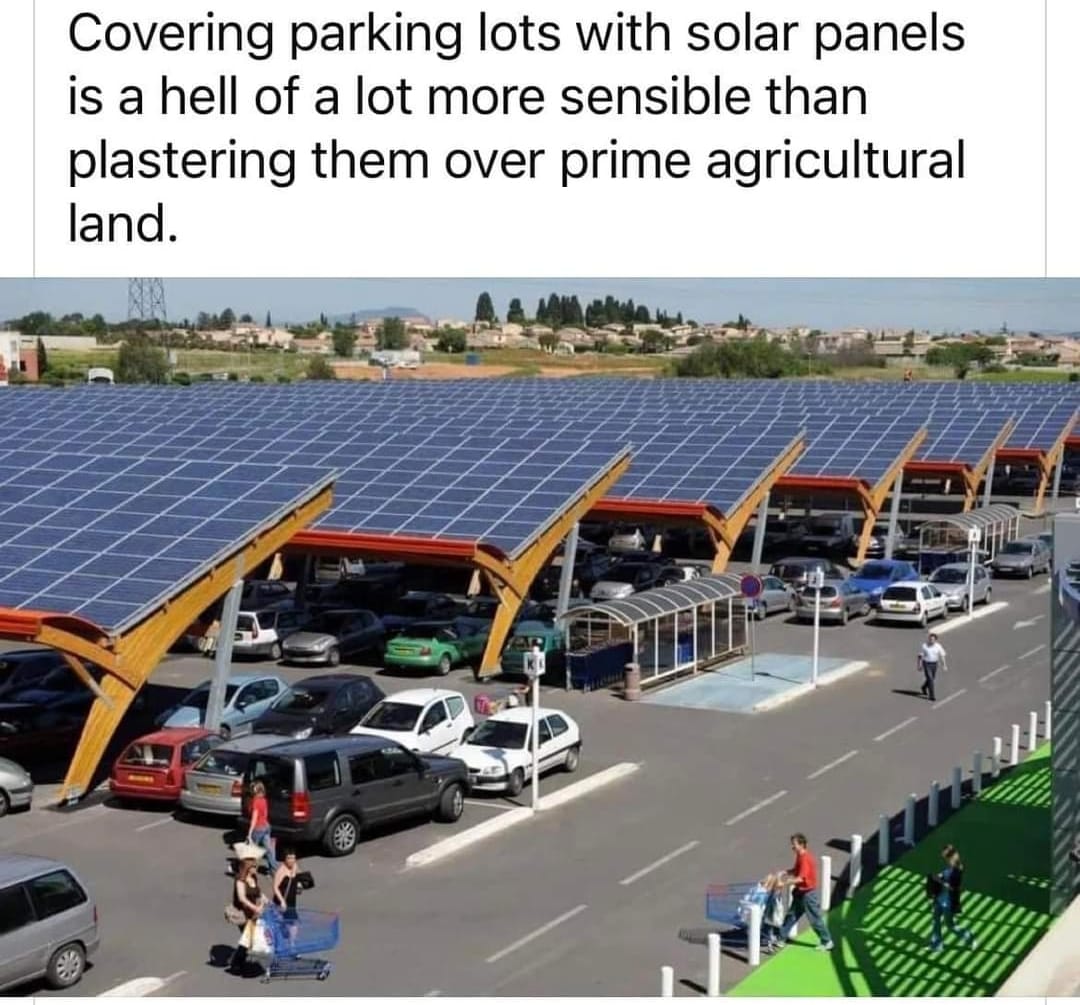this post was submitted on 13 Jul 2024
1017 points (100.0% liked)
196
16459 readers
33 users here now
Be sure to follow the rule before you head out.
Rule: You must post before you leave.
founded 1 year ago
MODERATORS
you are viewing a single comment's thread
view the rest of the comments
view the rest of the comments

Certain crops can benefit think from some shade throughout the day:
I assume that maximal crop output would happen if you just grow things in their optimal climate, but then you rely more heavily on transportation.
Agrivoltaics are so cool!
Indoor farming is on the rise, as you can have the optimal climate anywhere. It's more spatially efficient with vertical planting, but it has a far higher energy cost for air conditioning and potentially lighting. At least the farm workers are cooler too 🤷♀️
AFAIK lighting is the biggest energy eater for indoor farming.
It depends. Natural lighting makes more sense closer to the equator, while ac costs are probably higher than farther north. Regardless of what the energy is spent on, it has a huge footprint.
Artificial lighting is not optional, otherwise it's not indoor farming, just fancy greenhouses.
If you put solar panels above your crops, that makes them significantly harder to harvest
Depends on the crop lots of crops are still harvested by hand. Also lots of crops are destroyed by hail, heavy rains or high winds all of which are somewhat protected by solar panels above.